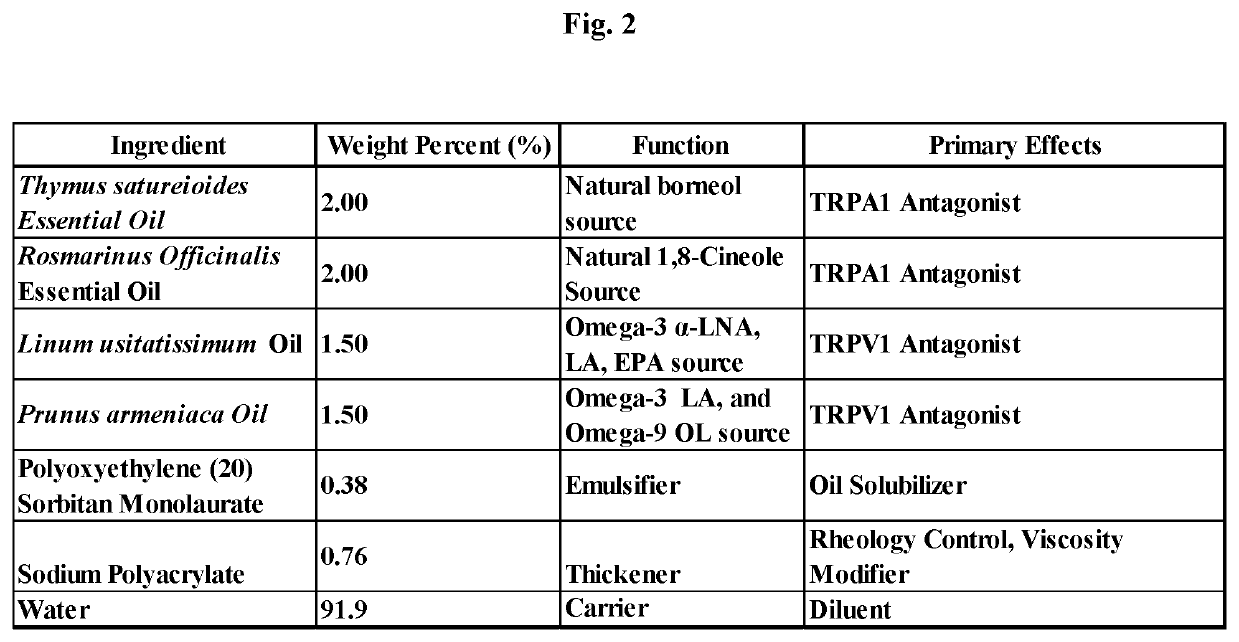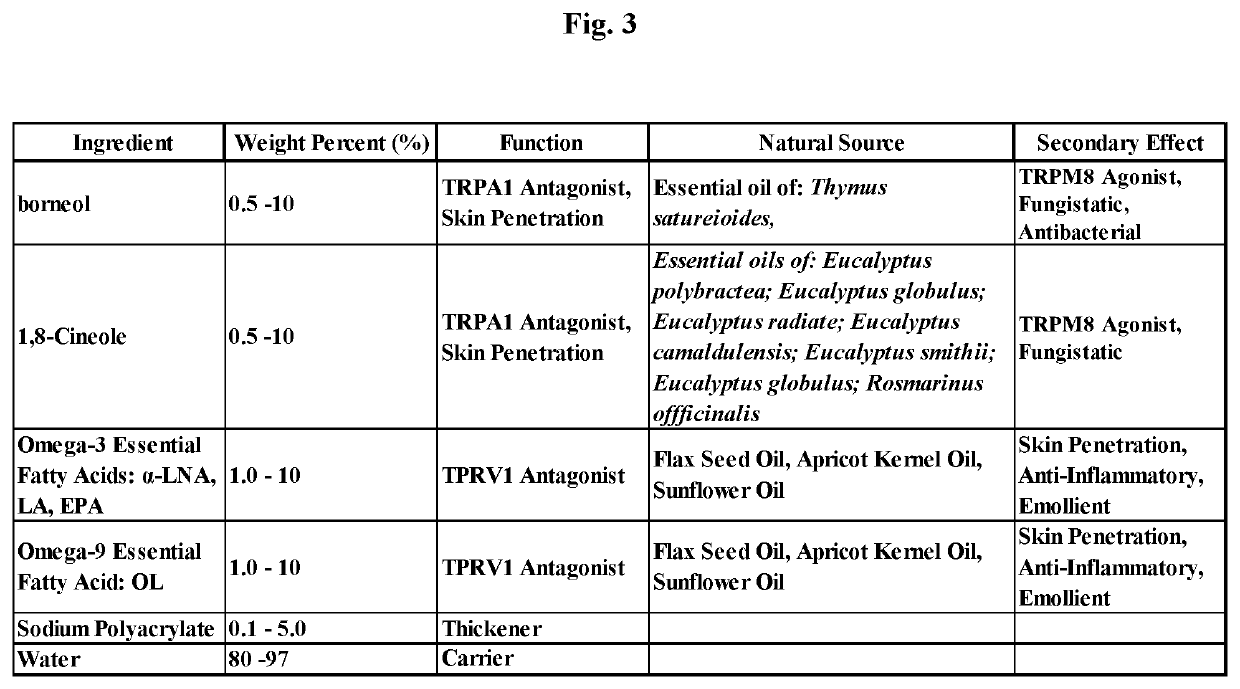Multifunctional formulations and methods to control dermatitis and pruritus
a multi-functional formulation and dermatitis technology, applied in the field of multi-functional formulations, can solve the problems of not directly treating the cause of the pruritus, hives are often severe itching, and cannot be used in the treatment of histamine-dependent pruritus
- Summary
- Abstract
- Description
- Claims
- Application Information
AI Technical Summary
Benefits of technology
Problems solved by technology
Method used
Image
Examples
example 1
[0213]A composition and method of manufacture of a topical cream to treat dermatitis and pruritus comprising: borneol, 1,8-cineole, and Omega-3 and Omega-9 fatty acids for the composition presented in FIG. 1 consists of mixing an amount sodium polyacrylate and poly oxy ethylene (20) sorbitan monolaurate with the oil phase components of the composition to dissolve the sodium polyacrylate then adding an amount of water, such that a stable single phase homogeneous cream results. Mixing is limited to that required to dissolve the sodium polyacrylate with the oil phase components and then to mix the water for a period of time to create the stable single phase homogeneous cream and to minimize volatilization of borneol and 1,8-cineole. Methods of use of the composition of the topical cream given in this Example 1 include but are not meant to be limited to placing the cream composition in a roll-on bottle then placing the roll-on ball into the roll-on bottle container, placing the cream co...
example 2
[0214]A preferred composition and method of manufacture of the topical cream to treat dermatitis and pruritus comprising: borneol, 1,8-cineole and Omega-3 and Omega-9 fatty acids is presented in this Example 2. Manufacturing consists of mixing the oil phase components comprising 20.0 g Thymus satureioides 20.0 g Rosmarinus Officinalis Essential Oil, 15.0 g Linum usitatissimum Oil and 15.0 g Prunus armeniaca with 7.6 g sodium polyacrylate, 3.8 g poly oxy ethylene (20) sorbitan monolaurate and then mixing sufficiently to dissolve the sodium polyacrylate, followed by then adding 919 g water then rapidly mixing for 2 to 5 minutes for the stable single phase homogeneous cream to form. Mixing is limited to that required to dissolve the sodium polyacrylate with the oil phase components and then to mix the water for a period of time to create the stable single phase homogeneous cream and to minimize volatilization of essential oils containing borneol and 1,8-cineole. Methods of use of the c...
example 3
[0215]A method of manufacture of a topical gel to treat dermatitis and pruritus comprising: borneol, 1,8-cineole and Omega-3 and Omega-9 fatty acids for the composition presented in FIG. 3 consists of mixing an amount sodium polyacrylate with the oil phase components of the composition to dissolve the sodium polyacrylate then adding an amount of water, such that a stable single phase homogeneous gel results. Mixing is limited to that required to dissolve the sodium polyacryl ate with the oil phase components and then to mix the water for a period of time to create the stable single phase homogeneous gel and to minimize volatilization of borneol and 1,8-cineole. Methods of use of the composition of the topical gel given in this Example 3 include but are not meant to be limited to placing the gel composition in a roll-on bottle then placing the roll-on ball into the roll-on bottle container, placing the cream composition in a squeeze tube container, placing the cream composition in a ...
PUM
| Property | Measurement | Unit |
|---|---|---|
| Fraction | aaaaa | aaaaa |
| Fraction | aaaaa | aaaaa |
| Fraction | aaaaa | aaaaa |
Abstract
Description
Claims
Application Information
 Login to View More
Login to View More - R&D
- Intellectual Property
- Life Sciences
- Materials
- Tech Scout
- Unparalleled Data Quality
- Higher Quality Content
- 60% Fewer Hallucinations
Browse by: Latest US Patents, China's latest patents, Technical Efficacy Thesaurus, Application Domain, Technology Topic, Popular Technical Reports.
© 2025 PatSnap. All rights reserved.Legal|Privacy policy|Modern Slavery Act Transparency Statement|Sitemap|About US| Contact US: help@patsnap.com



